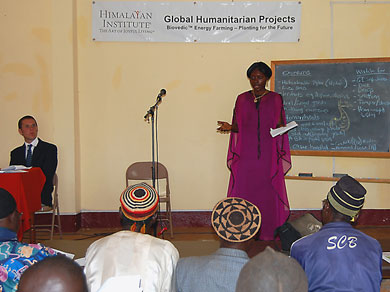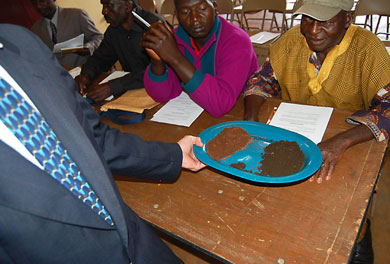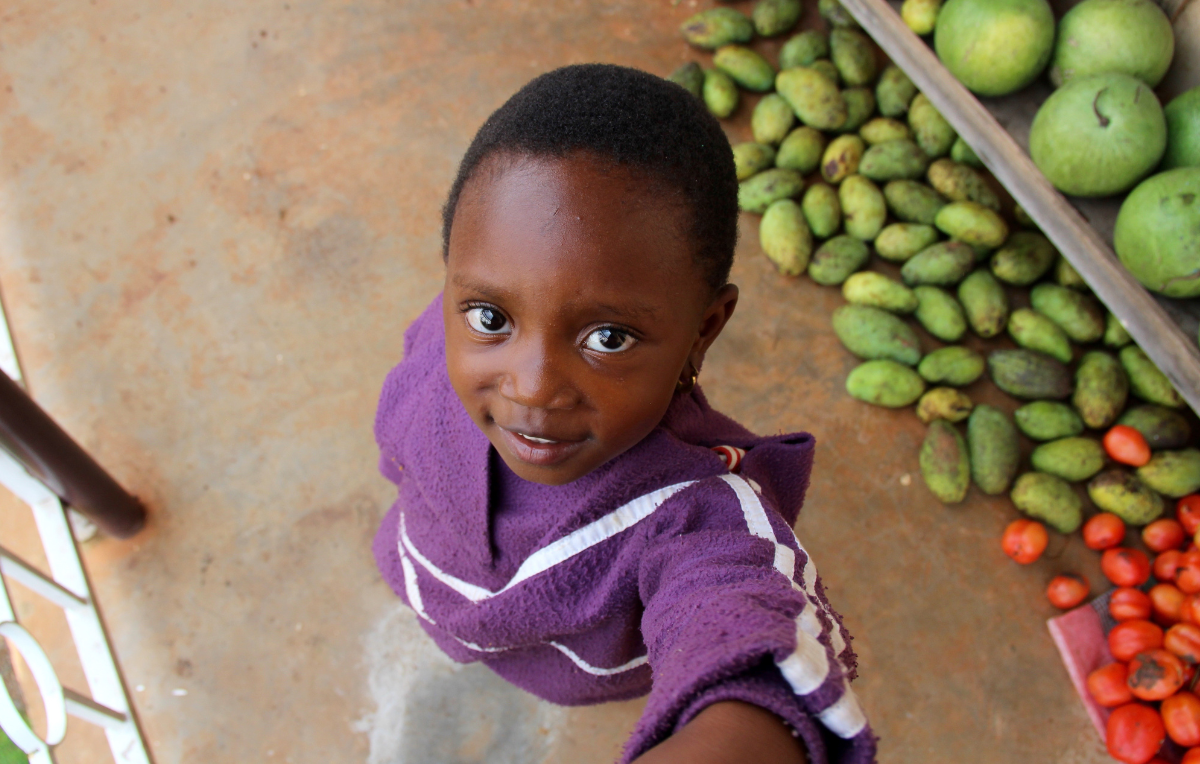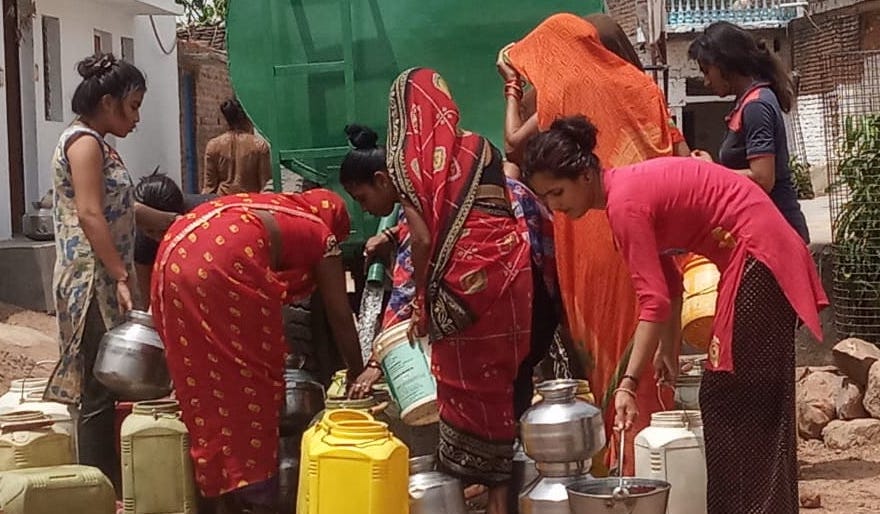The HIC held an interdisciplinary seminar on Saturday entitled Crop Diversification to Improve Diet and Nutrition. The event called together staff from the agricultural School of Energy Farming and the wellness-oriented Total Health Center.
Anita Mongshi of Total Health explained how the common local diet, made up overwhelmingly of corn, is responsible for many of the conditions she treats at the Total Health Center.
“The number one health problem in Kumbo is gastritis and hemorrhoids,” she said. “This problem is diet-related because people don’t understand what combination of foods to put together in meals. They take a lot of starchy food and few fruits or vegetables, and so their alimentary canal becomes congested and causes disease.”
HIC’s Virat Xavier drew upon his thirty years of experience teaching yoga to describe the connection between the variety food crops grown and the health of body and mind.
Then Energy Farming’s Luke Demuth and Collins Litika took the stage for some practical advice on growing more fruits and vegetables. Demuth said, “In talking with people here I have heard a lot of farmers say that they’ve tried to grow different crops, but after planting them they see that these crops aren’t growing and so they think that Kumbo is the wrong climate to grow them in. Really the poor soil here or else poor techniques are to blame.” He emphasized the need for composting to restore fertility to the overtaxed Kumbo soil.
Local farmers often cover seeds with raffia palm leaves to induce germination. This raises the soil temperature but blocks sunlight, starving crops even as they sprout. Litika explained to the group how a simple greenhouse could be made from cheap, local materials.
Unhealthy individuals are an impediment to economic growth just as unhealthy soil is an impediment to crop growth. Raising awareness of the connection and providing solutions is an important component of the Himalayan Institute’s global humanitarian efforts.


On the left, unhealthy reddish soil from Kumbo. On the right, nutrient-rich soil from unfarmed Kishong village.





